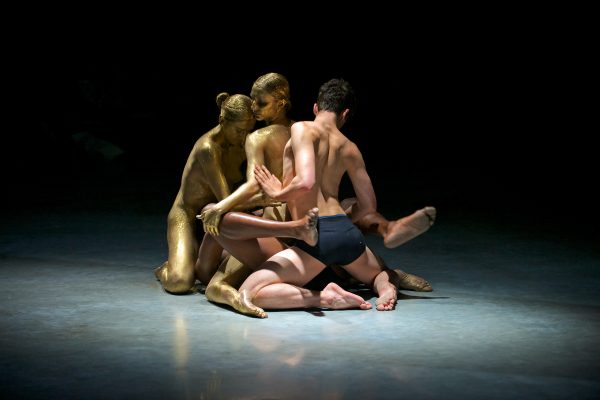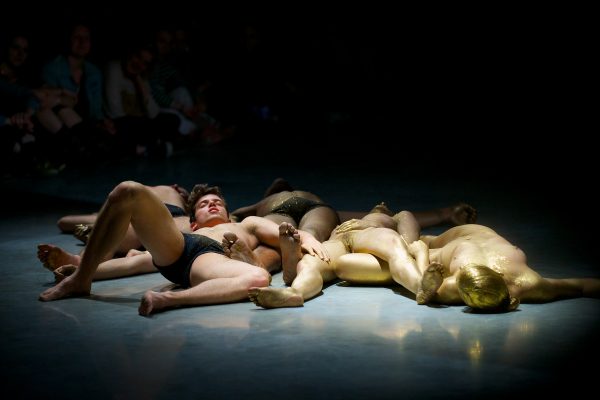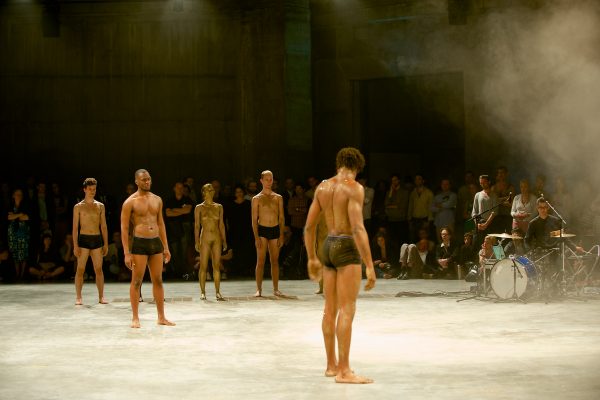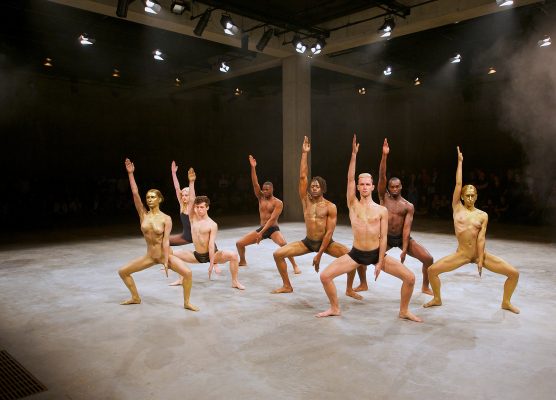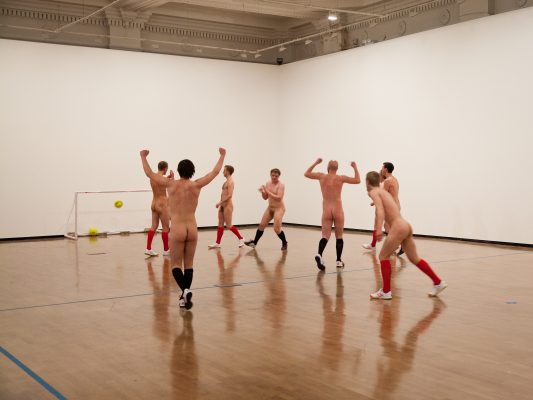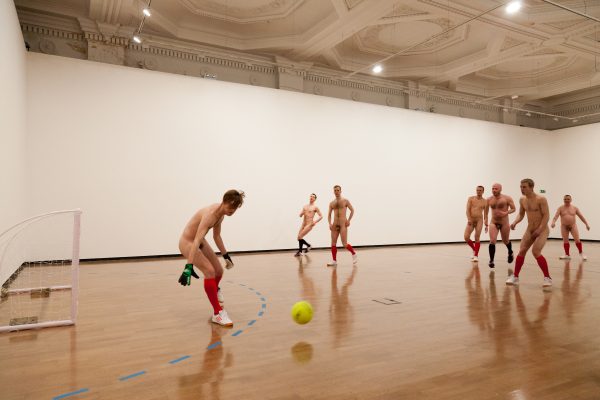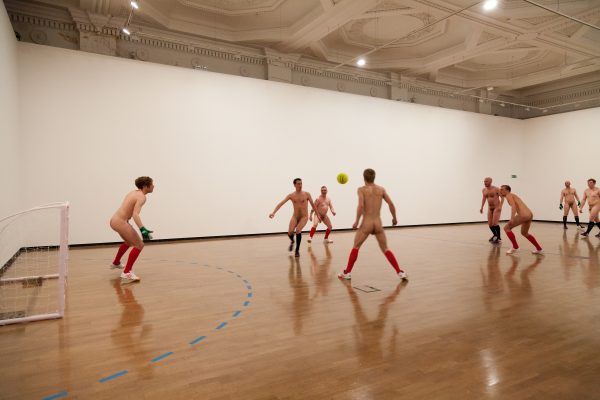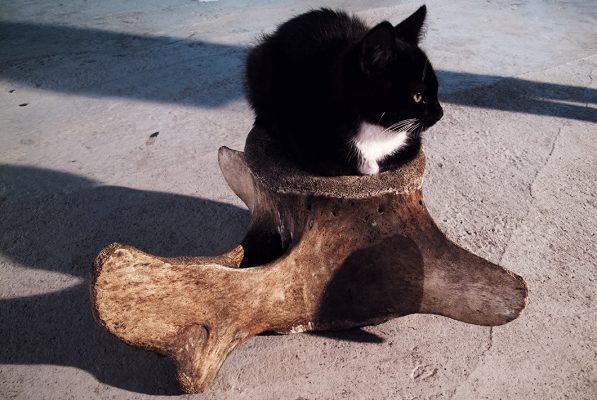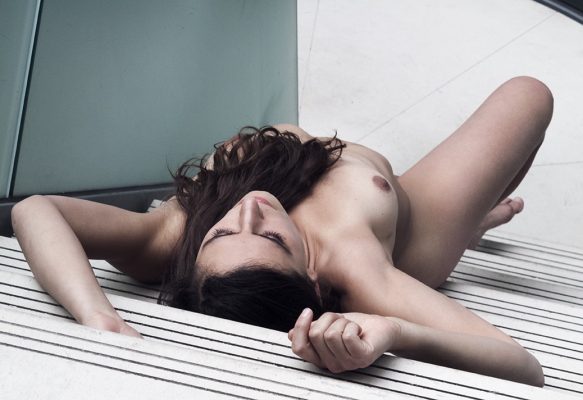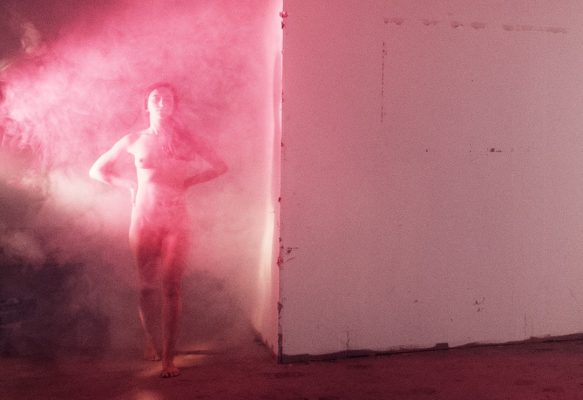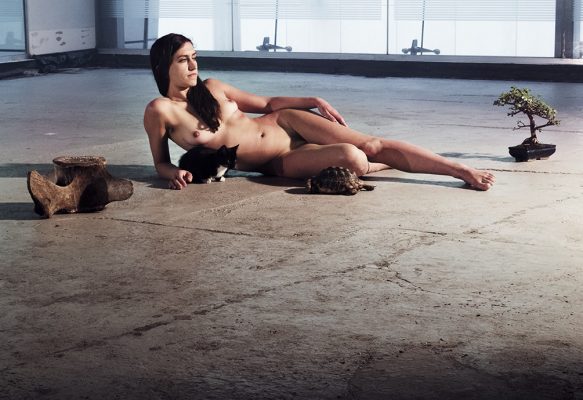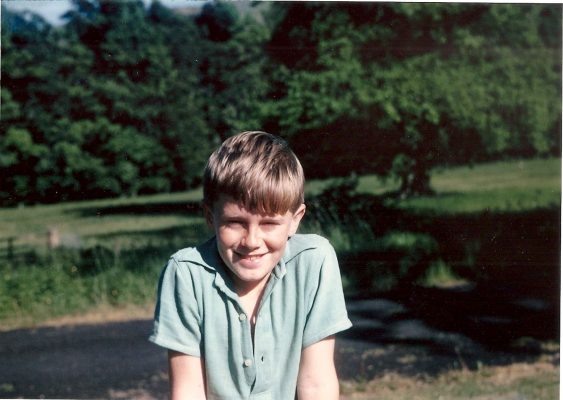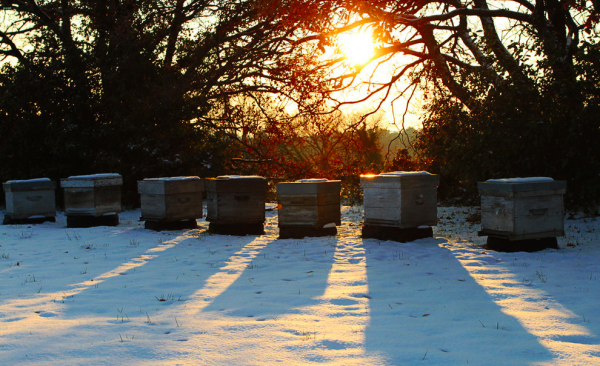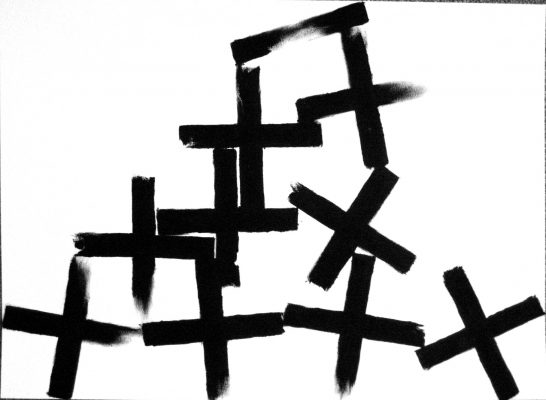Like many people, I had seen Eddie Peake’s penis long before I met the artist himself. For several years a fuchsia-tinted, close-up photograph of his erection was the sole image on his website. He is often naked in the large group performance pieces that he swiftly has become known for, such as ‘Touch’ (2012), a nude five-a-side football game staged at the Royal Academy Schools, where he was a student, and ‘Infinite Disparity’ (2013), a continuous performance devised onsite at his solo exhibition at White Cube, a show that Eddie himself describes as ‘elaborate and bonkers’.
Much of Peake’s art shouts for attention, and like the nudity it is purposefully difficult to ignore. His paintings combine kitsch, acid-coloured spray painting with new rave imagery like massive pairs of sunglasses. On to pristine mirrored surfaces large lacquered letters are scrawled: ‘DON’T THINK U’R 2 NICE’, ‘CLLNG ALL RVRS’, ‘GRRLS WHO LOVE DICK’.
But in person Eddie is not at all flamboyant. Softly spoken and self-effacing, he discusses his work and the art world with humility and humour. He is all sleepy north London lad: shaved head, pierced ear, matching Nike tracksuit and trainers. Although he comes from an artistic family he says his other siblings were the ‘arty ones, always drawing’. He was more into physical stuff: using his body, playing football, being outside.
That impulsive energy, a desire to be active and present, has carried through into his work. Currently in the process of putting together his latest solo show, A Historical Masturbators, at Galleria Lorcan O’Neill in Rome, he remains driven chiefly by a love of making and doing. Combined with confidence and curiosity, this has led him down many paths in order to create his work – music, film, photography, drama, dance – and it is clear from his description of this show that he will continue to explore more. (Our interview concludes when a foundry man arrives to discuss whether it might be possible to cast ejaculations in bronze.)
